16 Stories That Prove Kindness Is the Quietest Yet Strongest Language in the World

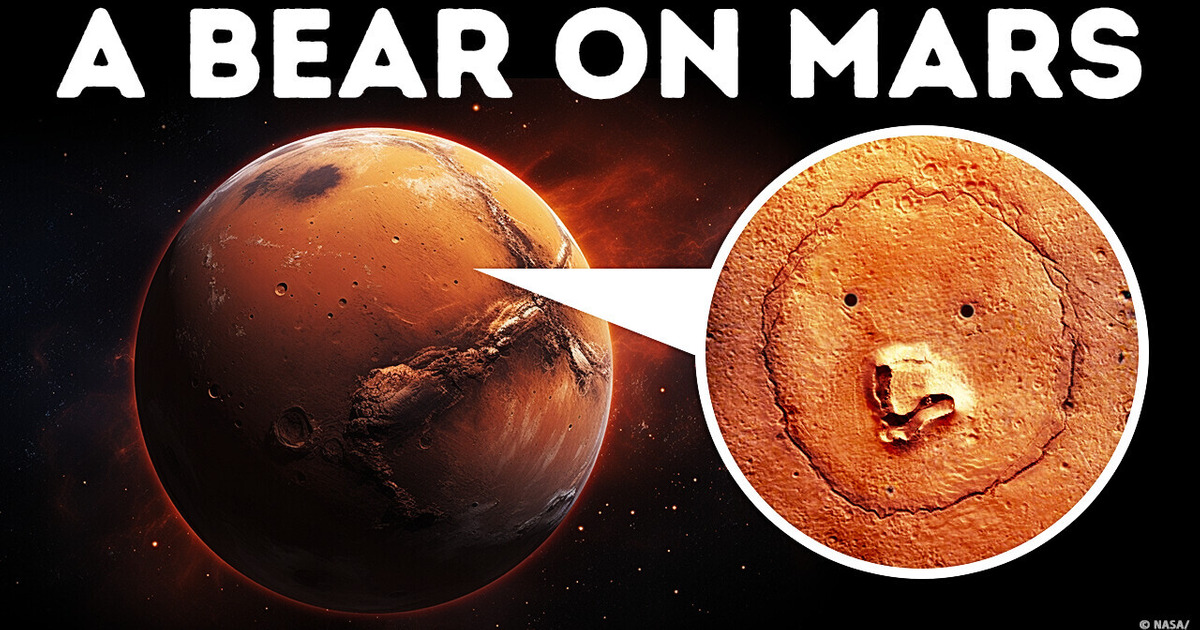
Imagine being one of the first people sent to explore Mars. As you’re approaching the Red Planet, something strange and creepy draws your attention. There, yes, right there! Doesn’t it look... like a mammoth bear’s head?! What — or who?! — could possibly create a bear’s snout in the middle of a crater?
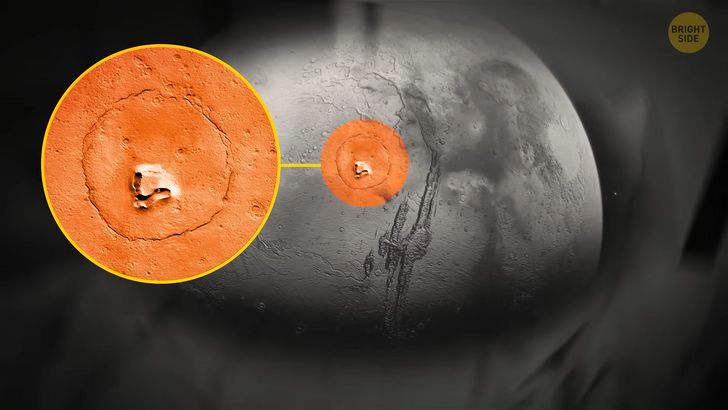
Unfortunately (or should I say luckily?), there’s nothing mysterious about the bear’s head. It’s just facial pareidolia. That’s a tendency to see facial structures in everyday things. Hmm, but speaking about the finding on Mars, should we rename the phenomenon into “bear-idolia”? You could see that coming, couldn’t you? Alright, check it out.
You see a V-shaped hill that looks like a nose. Then there are two craters that look like eyes. And then, there is a circular fracture pattern (the head) that surrounds “the nose” and “the eyes.” Experts think that the “face” could be created when a deposit was settling over a buried impact crater. And the nose might be a mud or volcanic vent with solidified lava or mud flows around it.
Anyway, the crater does look like a bear’s face; I’ll give you that. But thanks to HiRISE, another of NASA’s amazing acronyms, we’ve seen many other crazy craters on the Red Planet. Like smiley faces, a bird, or an elephant.
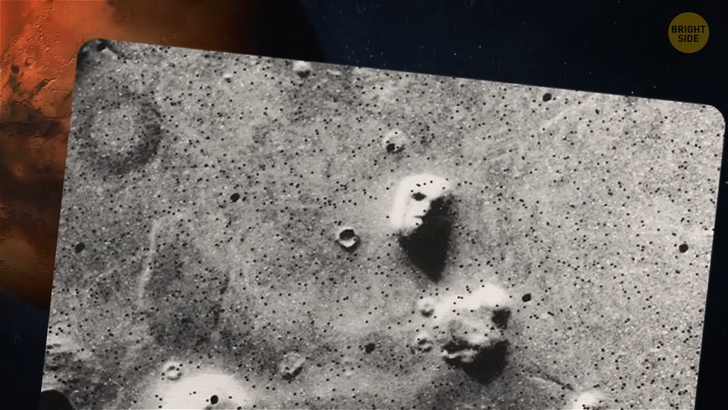
First, let’s have a look at the famous “Face of Mars.” These images were first taken by the Viking orbiter in 1976. At that time, the resolution was obviously quite poor; plus, the lighting was slanted. Which produced the result that shocked people in the 1970s — a face carved of rock, staring back at Earth.
Did it mean there was another civilization on Mars that had created this monument? Nope. Look at the photo of the same spot taken by the current Mars Reconnaissance Orbiter. The resolution is much, much better — and the face has miraculously turned into an ordinary hill.
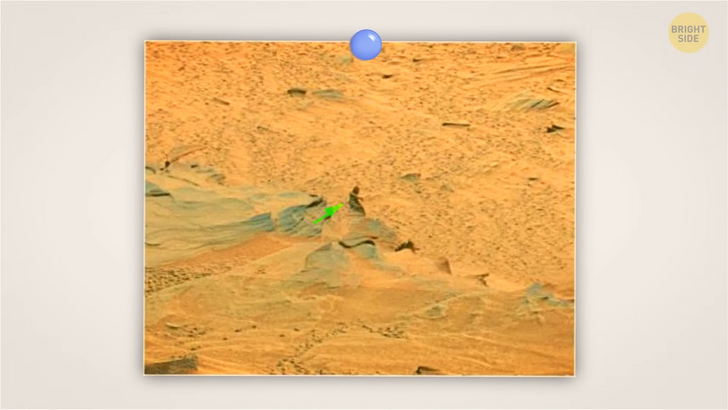
Or look at this teeny Bigfoot whose image was captured in 2008. I say “teeny” because this “creature” is just a few inches tall! And when the photo was taken, “Bigfoot” was only several yards away from the camera.
And here, one curious soul zoomed in on a small rock and spotted something that resembled a gorilla. That’s how some people started to believe there were apes on Mars. Yeah, really.
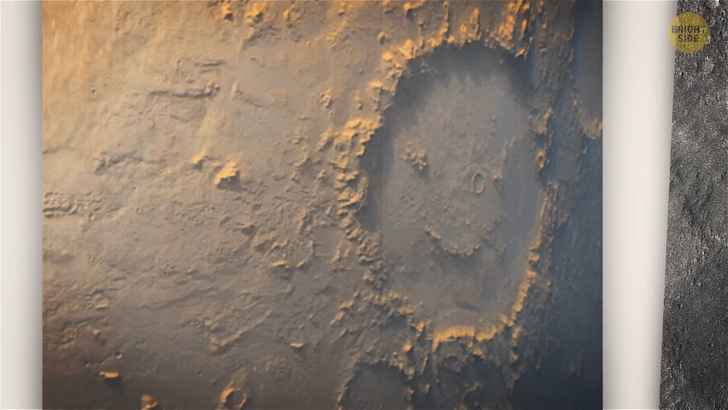
Let me show you some more examples of imaginary creatures and faces on the Red Planet. Most of them come from a series of images taken by the THEMIS camera. Currently, it’s on board the Mars Odyssey spacecraft — which needs only 2 hours to orbit the Red Planet, carrying some important scientific instruments. Let me introduce “My Happy Martian” to you. This 2-mile-wide crater was photographed in 2008.
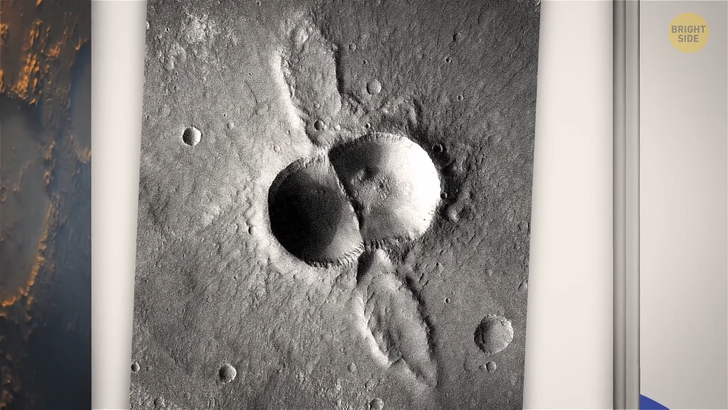
The next crater chain looks like a wasp, with its wispy “wings” of impact debris. The whole feature was probably created by a meteorite that fell at a very low angle and broke into pieces right before the impact.
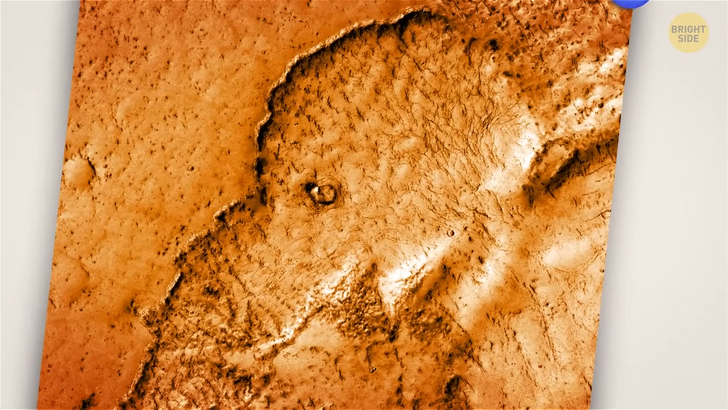
Do you see a woolly mammoth or an elephant here? Lava flows in one region on Mars left this image on its reddish soil. The region itself, called Elysium Planitia, is famous for the planet’s youngest lava flows. For example, the one that looks like a mammoth most likely formed in the past 100 million years. Ah, just yesterday...
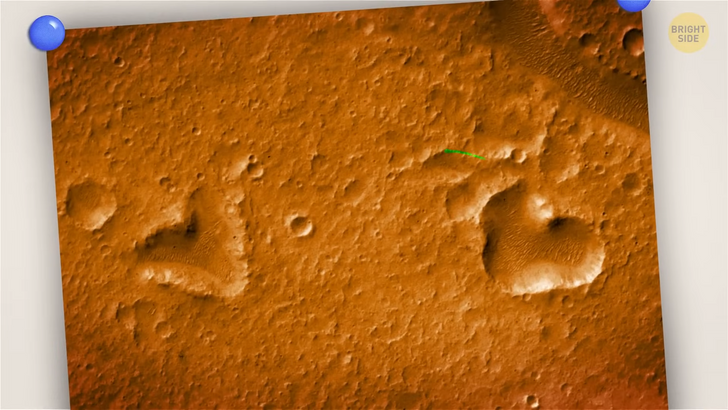
Let’s talk about love. Or rather, its symbol — the heart. Do you like these two hearts on the surface of the Red Planet? This one is actually a mesa top outlined by frost. And this heart shape is an impact crater. The hit tore away dark surface material and exposed lighter soil underneath. Then some of the material probably flew downslope, creating the heart.
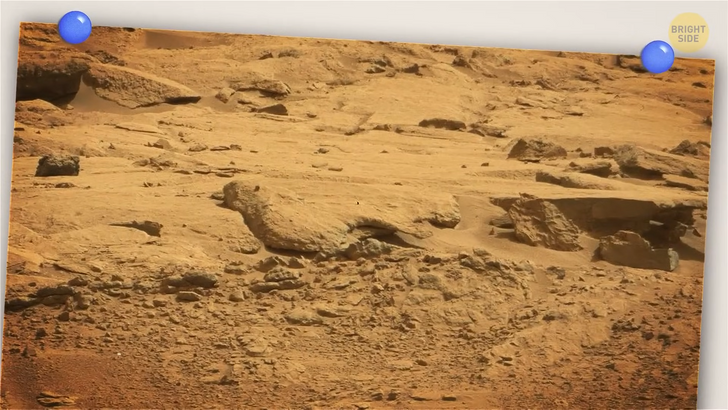
And this is a dust-covered hummingbird. Can you see its long beak and head? Scientists aren’t sure how this shape formed. But they think erosion and wind played a part in its creation.
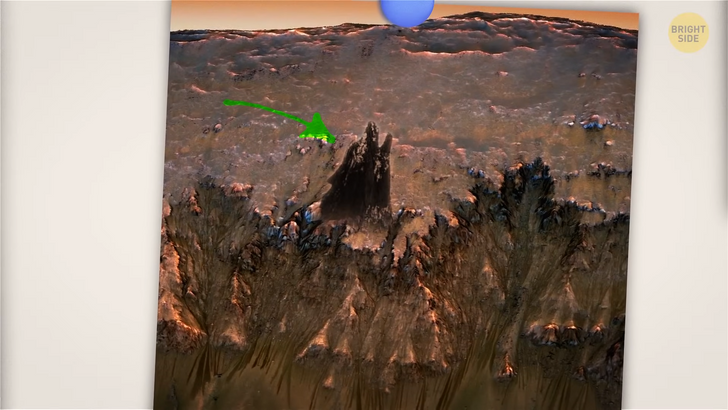
These dark sand dune deposits look like a howling wolf.
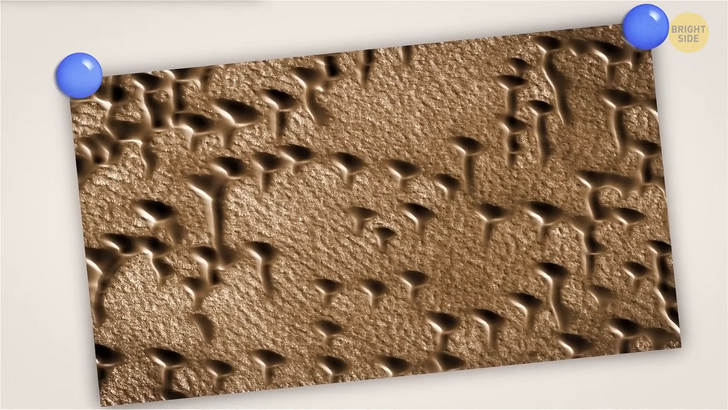
And here, can you see a series of interlocking gears? This image looks like the letter T, right? The right-angle fracture was created by the tectonic stretching of the Martian crust. Do you think we might find other letters of the alphabet on Mars, too? Why not?
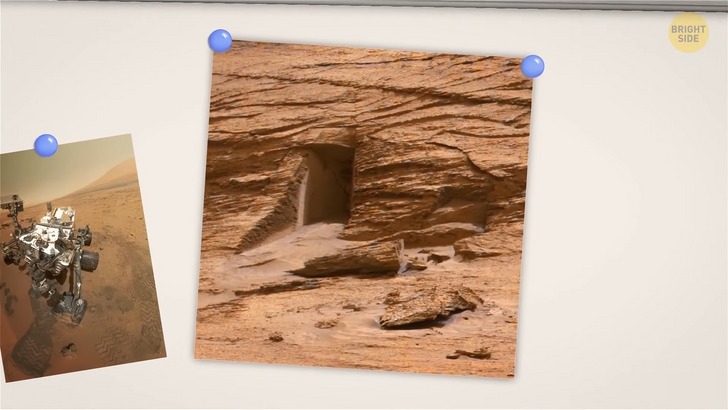
And now, how about another bizarre thing astronomers noticed on the surface of Mars? Is that... a door to someone’s home?! It was NASA’s Curiosity rover that sent this image to Earth. It became viral because this formation over here — see? — looks like a door! Unfortunately, scientists due to their rational minds were quick to disappoint us. They claimed it was just a natural part of the Martian landscape. There were several clues that made them think it wasn’t a real door. For example, the opening is tiny — a mere 3 feet high. They’re sure that what looks like a door is actually an opening in a rock created by natural forces, like winds and erosion.
If you look at the rock closely, you may notice strata — those are layers of silt that stand out because they’re harder than the surrounding material. These strata dip here, on the left, and a bit higher, on the right. They likely appeared around 4 billion years ago in a river or a wind-blown dune. Since the strata became visible, powerful Martian winds have eroded them even more. And look at this! See those cracks?
That’s how rocks weather on the Red Planet! This small cave probably formed when several fractures crossed the strata. A pretty large boulder might have fallen out under its own weight. And this created the door-shaped opening. This theory is quite plausible. Because even though the gravity on Mars isn’t as strong as on Earth, it’s still strong enough to do it. Besides, see that rock to the right of the opening? It has a suspiciously smooth vertical edge. It must be the culprit! It probably fell out not so long ago.
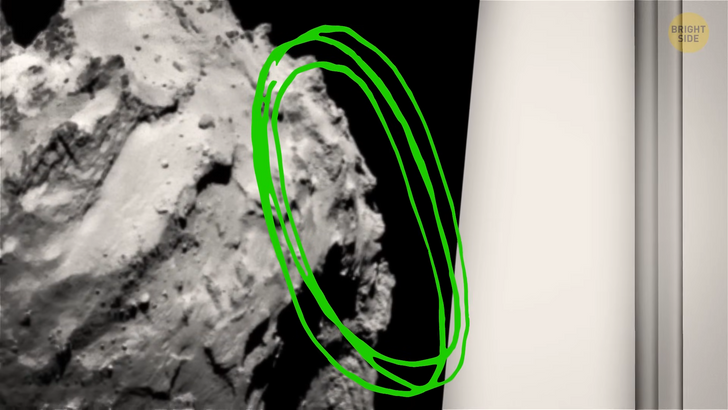
But it’s not only the Red Planet that can boast of having unusual formations. Let’s take this comet, for example. This image was taken by the European spacecraft Rosetta in 2014. Can you see a face on its right-hand side?
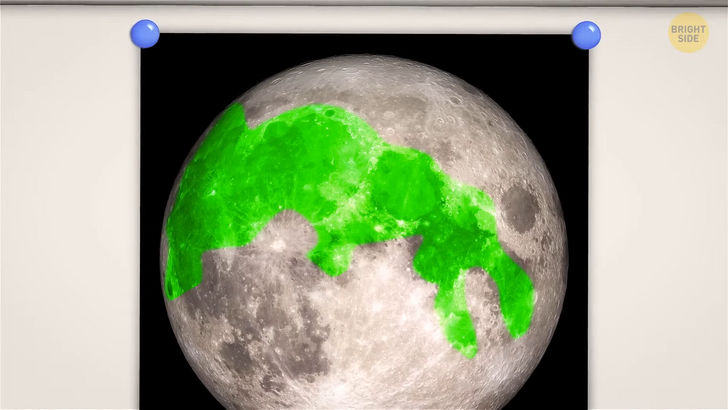
Or the Moon! Here’s its famous rabbit. It sits upside-down, with its ears pointing downward. Some people see a man on the Moon. It can be either his face or the entire body. If someone sees the whole human figure, it usually looks as if it’s carrying sticks. Sometimes, it’s a toad. To spot it, look at the top left-hand side of our satellite. The toad is facing upward. See?
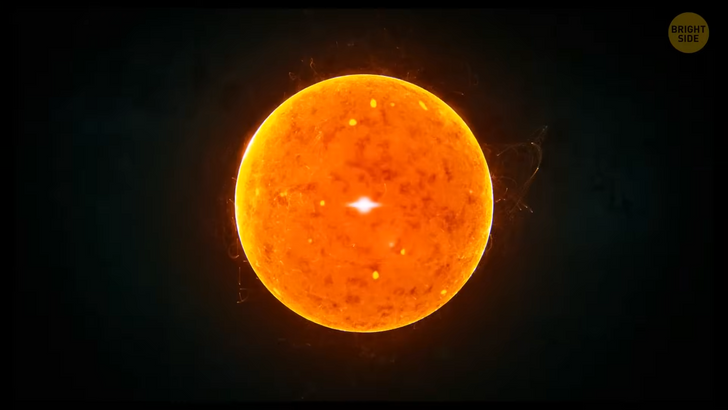
Now, look at this spinning neutron star. Such a star is a collapsed core of a supergiant star with a total mass of 10 to 25 solar masses. Except for black holes and some hypothetical objects, like quark stars or white holes, neutron stars are the densest and smallest known stellar objects. Anyway, back to this particular star. As you see, this space object, located 17,000 light years away from Earth, is surrounded by a cloud of energetic particles.
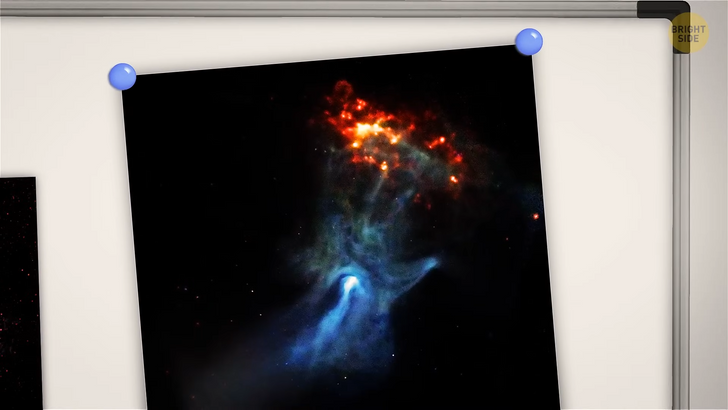
And this image, taken by NASA’s Chandra X-ray Observatory, appeared in 2009 — and became viral in no time. All because many people spotted a hand-like structure among all that space stuff. NASA explained that the star was spinning incredibly fast, spewing energy into the space surrounding it. This creates intriguing and complex structures, like the large cosmic “hand” so many people see.
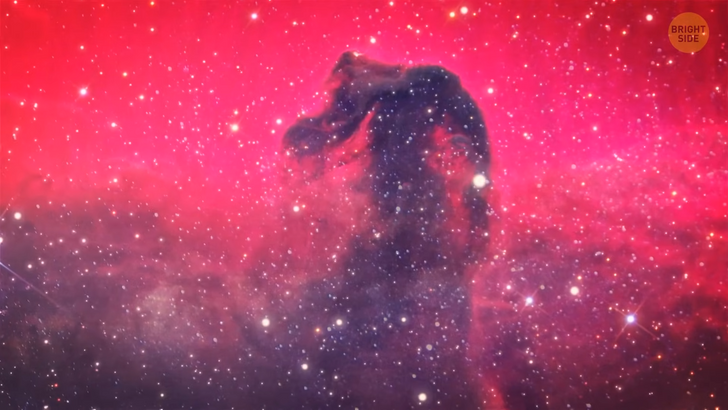
Look at the Horsehead Nebula in the constellation Orion. This is a freezing-cold and dark cloud of dust and gas that was first noted in 1888. This dark shadowing is created by dust. And at the base of the nebula, there are many bright spots — those are young stars at the stage of formation.
Pay attention to this extremely bright star in the top left side of the “horse head.” Its radiation is so powerful that the star is starting to erode the cloud around itself! It means that in millions of years, the nebula might not resemble the head of a horse anymore. Well, I won’t be around then.
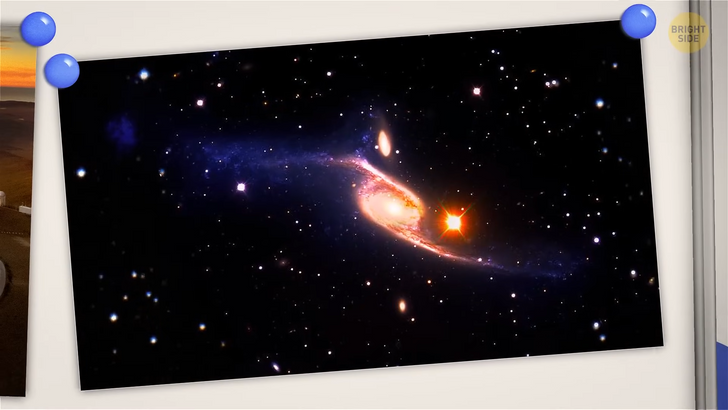
The European Southern Observatory Very Large Telescope has captured an image in which we can see the collision of three different galaxies! We can even observe the effect they have on each other. But the coolest thing is that, while colliding, they created a recognizable shape. Because doesn’t it look like a giant space hummingbird?











